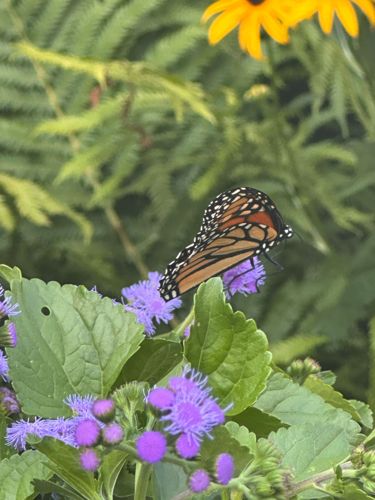Monarch Butterfly
Scientific Name: Danaus plexippus
Order & Family: Order: Lepidoptera, Family: Nymphalidae (Brush-footed butterflies)
Size: (Wingspan) 8.9 – 10.2 cm (3.5 – 4 inches)

Natural Habitat
Monarch butterflies inhabit open areas, including meadows, fields, prairies, open woodlands, roadsides, and gardens, particularly where milkweed is abundant for their larvae and nectar sources are available for adults. During winter, eastern populations migrate to oyamel fir forests in central Mexico, while western populations overwinter along the California coast in groves of eucalyptus, Monterey pine, and other trees.
Diet & Feeding
Adult Monarch butterflies primarily feed on nectar from a wide variety of flowering plants. Caterpillar (larval stage) Monarchs feed exclusively on milkweed plants (Asclepias species).
Behavior Patterns
Monarch butterflies are known for their spectacular annual migration. Each autumn, millions of Monarchs travel from the U.S. and Canada to overwintering sites in Mexico and California. They use environmental cues like declining daylight and temperature to trigger their migration. During the day, they are active pollinators, feeding on nectar. Their life cycle includes four stages: egg, larva (caterpillar), pupa (chrysalis), and adult butterfly, with each stage having distinct behaviors.
Risks & Benefits
Monarch butterflies are iconic pollinators, benefiting ecosystems by facilitating plant reproduction, including many agricultural crops. However, they face significant risks due to habitat loss (especially milkweed for larvae and overwintering sites), pesticide use, and climate change, leading to population declines. They are not harmful to humans; rather, their survival is an indicator of environmental health.
Identified on: 8/16/2025